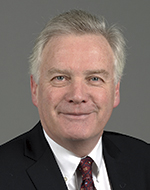Page Content
 If you want to understand the mindset of Alberta’s United Conservative government, you need only grasp one number.
If you want to understand the mindset of Alberta’s United Conservative government, you need only grasp one number.
It’s not the size of the deficit or debt or any other figure you’ll find in the provincial budget.
It’s this: 1,040,001.
That’s how many votes the UCP captured on election night April 16.
“We won the largest number of votes ever cast for a party in Alberta history,” said newly elected Jason Kenney in the days after the election (and on many other occasions since). “That is a mandate of historic proportions.”
For Kenney that “mandate of historic proportions” is both shield and sword. It allows him to attack his enemies and defend his policies. It is a combination of amulet and talisman and get-out-of-jail-free card.
It is why Kenney didn’t pause before embarking on his “summer of repeal” to reverse many of the policies of the previous NDP government. It’s why he fulfilled controversial election promises while bending or breaking others. It’s why he seems to introduce almost daily a new shock to Alberta’s body politic. It’s why he continues to wage war with Justin Trudeau and the federal Liberal government.
It’s why public sector workers should be nervous.
During the provincial election, Kenney focused his spotlight on the issues of jobs, the economy and pipelines. Cutting government spending and balancing the provincial budget weren’t cast into the shadows, but neither were they centre stage.
That has changed.
Kenney can’t magically create jobs, boost the economy and build pipelines.
He’s focused on government spending.
He’s hoping his cuts to the corporate tax rate will trickle down into job creation and a stronger economy. But that will take time, if it works at all.
However, by cutting those taxes, the government acknowledges it will reduce its revenues by $2.4 billion over four years (the NDP says the number is closer to $4.7 billion). The government has also reduced its revenue by scrapping the carbon tax and by selling off the oil-by-rail contracts. Total hit to government revenues: between $16 billion and $18 billion (depending on how you do the math).
If the government didn’t have a fiscal crisis before, it does now.
This crisis gives Kenney political cover for cuts to government spending and services. That and “1,040,001.”
It’s why he can tear up the big city charter agreements with Edmonton and Calgary; why his justice minister can angrily dismiss Calgary mayor Naheed Nenshi on Twitter as “Trudeau’s mayor”; why he can introduce legislation to unilaterally cancel the provincial contract with physicians that left the head of the Alberta Medical Association to wonder, “What is the value of an agreement when it can be revoked at any time with no public discussion?”
It is why on a Monday, Kenney can introduce legislation that would allow the government to hire replacement workers for essential government services during a public sector strike. And then on a Tuesday, he can almost dare those workers to strike by proposing they accept a wage rollback.
Kenney is not playing a game of chicken with public sector workers. That would imply he is bluffing. He is not.
He might not frame his relationship with public sector workers as a fight, but that’s what it is. He is careful not to take issue with the workers themselves, with the teachers, nurses and a myriad of others including social workers, sheriffs and jail guards. He is painting this as a struggle between everyday Albertans and “big government union bosses.”
He has praised the work of public sector workers, but he has no praise for their unions.
In November of 2017, during the debate over the NDP government’s Bill 24 and gay–straight alliances, Kenney, who was official opposition leader, held a news conference. I asked if he had met to discuss the GSA issue with the president of the ATA (who had in fact been asking for a meeting with Kenney for at least eight months).
“I don’t believe the ATA represents all of its members,” said Kenney. “I can tell you that in my travels across the province in the past 16 months, I’ve met hundreds of teachers who agree with me that they need the professional discretion to be able to engage parents if and when it is appropriate.”
I asked him if he had made any effort to talk to the ATA.
“I have not. I have talked to a lot of teachers. In fact, I’ve received letters and emails from teachers in the past three days opposing this legislation.”
He did eventually meet with ATA president Greg Jeffrey early in 2019. Kenney would later say he had no plans to split the ATA into a union and professional association (as some had feared), but he did tell reporters during the election campaign he wondered why principals were part of the bargaining unit.
“Principals are management and they have [a] responsibility to manage the teachers and to manage human resources in their schools.”
The ATA has strength in numbers, 46,000 to be precise.
But as far as Kenney is concerned, the only number that counts is 1,040,001. ❚
After 15 years writing a political column for the Edmonton Journal, Graham Thomson became a freelance political analyst and now writes regular columns for the CBC, iPolitics, Alberta Views magazine and others
Opinions expressed on this page represent the views of the individual writers and do not necessarily reflect the position of the Alberta Teachers’ Association.
